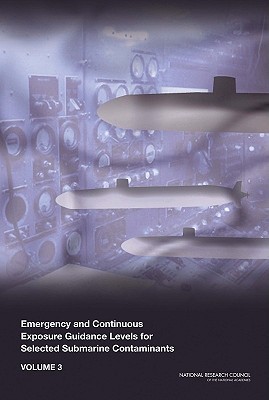Emergency and Continuous Exposure Guidance Levels for Selected Submarine Contaminants
Volume 3
(Author) National Research CouncilU.S. Navy personnel who work on submarines are in an enclosed and isolated environment for days or weeks at a time when at sea. Unlike a typical work environment, they are potentially exposed to air contaminants 24 hours a day. To protect workers from potential adverse health effects due to those conditions, the U.S. Navy has established exposure guidance levels for a number of contaminants. The Navy asked a subcommittee of the National Research Council (NRC) to review, and develop when necessary, exposure guidance levels for specific contaminants. This volume, the third in a series, recommends 1-hour and 24-hour emergency exposure guidance levels (EEGLs) and 90-day continuous exposure guidance levels (CEGLs) for acetaldehyde, hydrogen chloride, hydrogen fluoride, hydrogen sulfide, and propylene glycol dinitrate.
National Research Council
The National Research Council is a renowned organization dedicated to promoting scientific research and collaboration. Their most famous work includes conducting groundbreaking studies on various scientific disciplines. Their literary style is academic and precise, with key contributions to literature in the form of influential research papers and reports.




